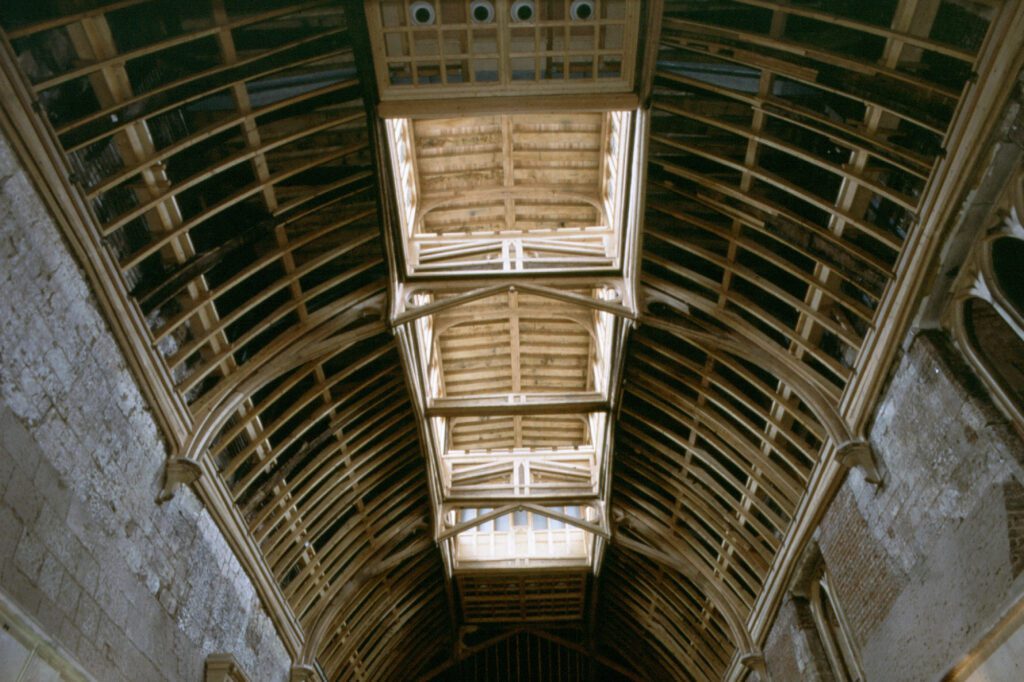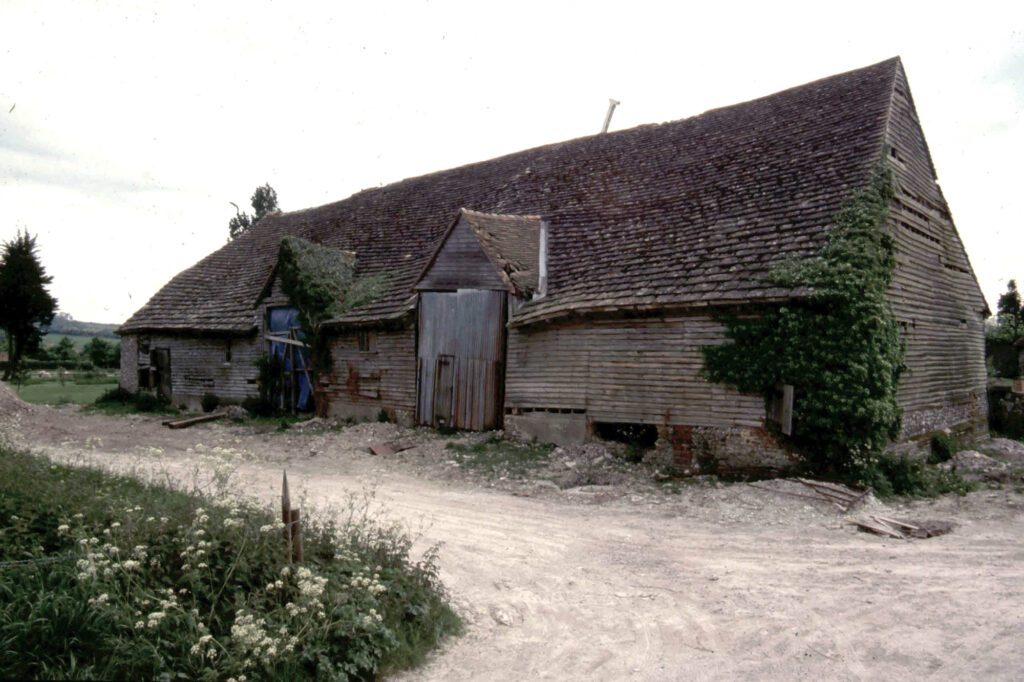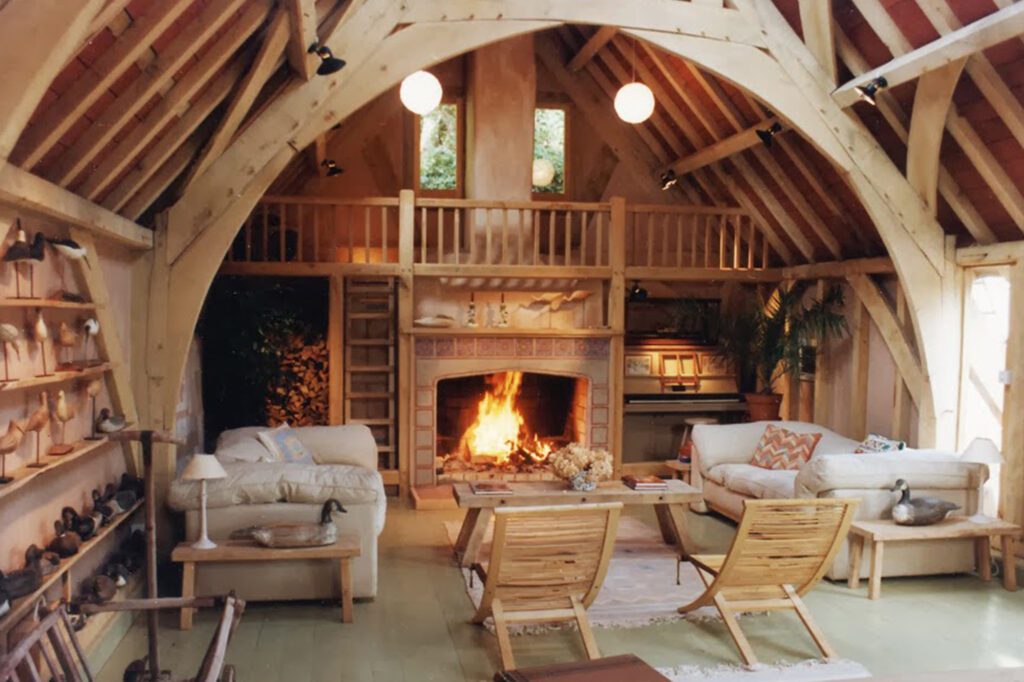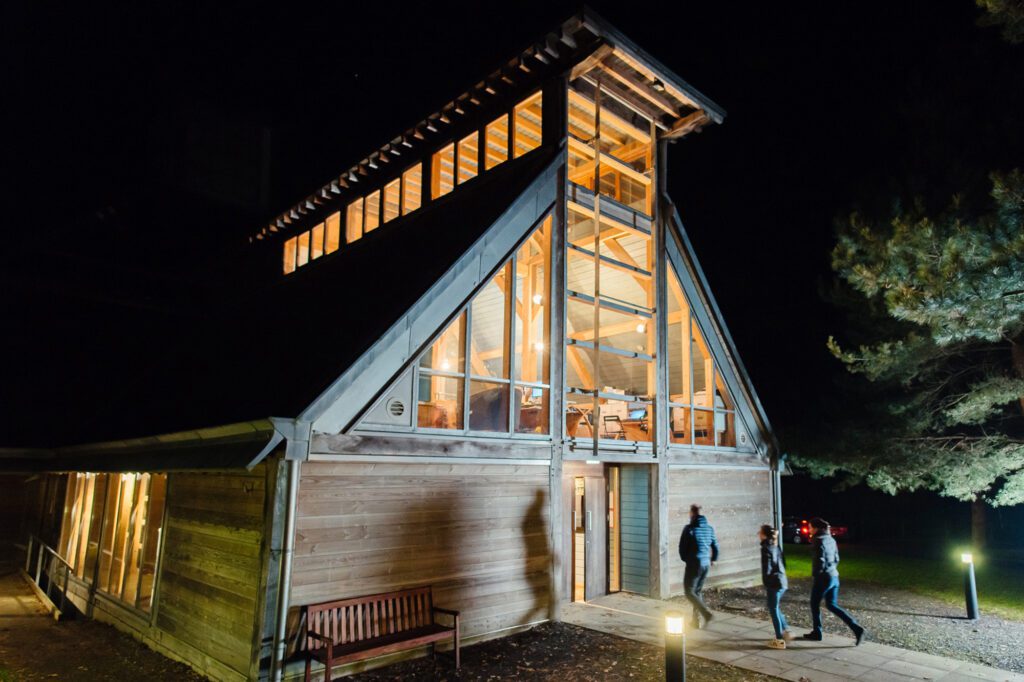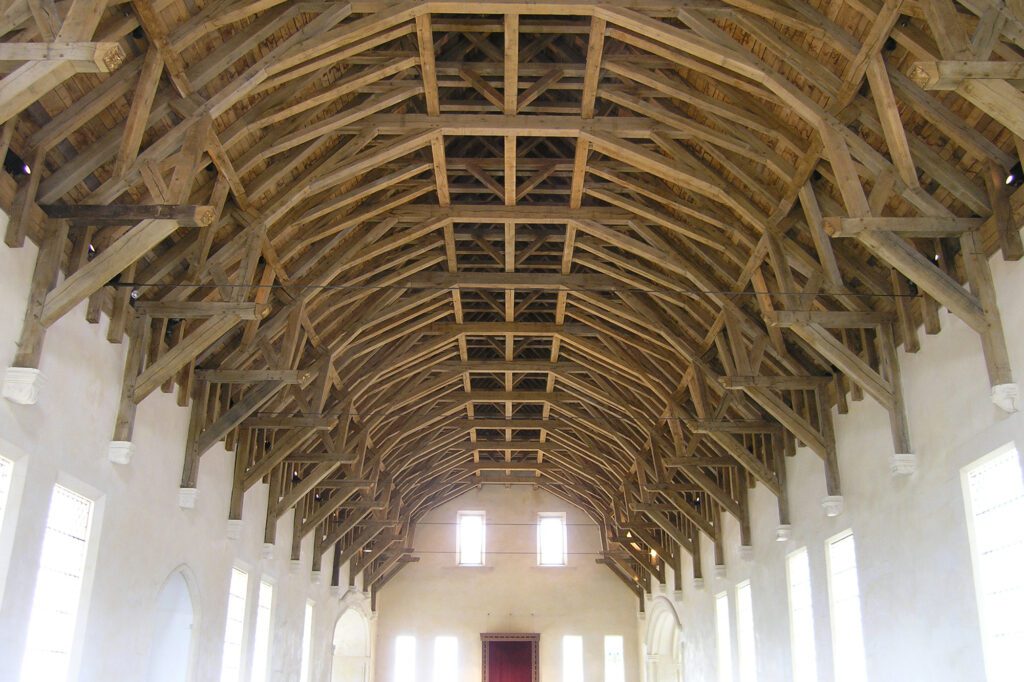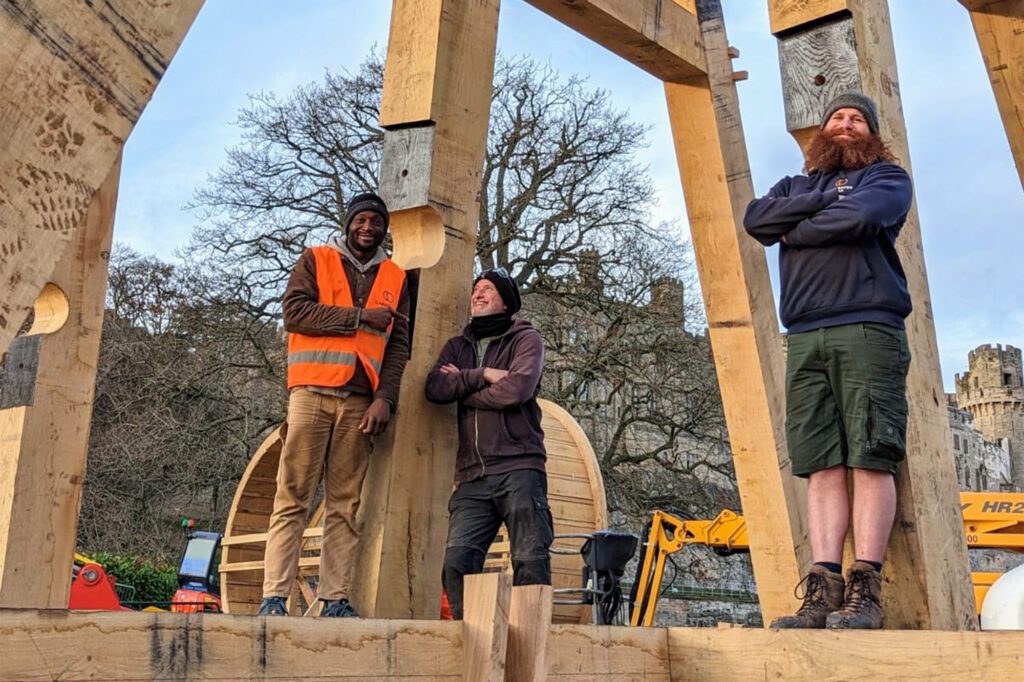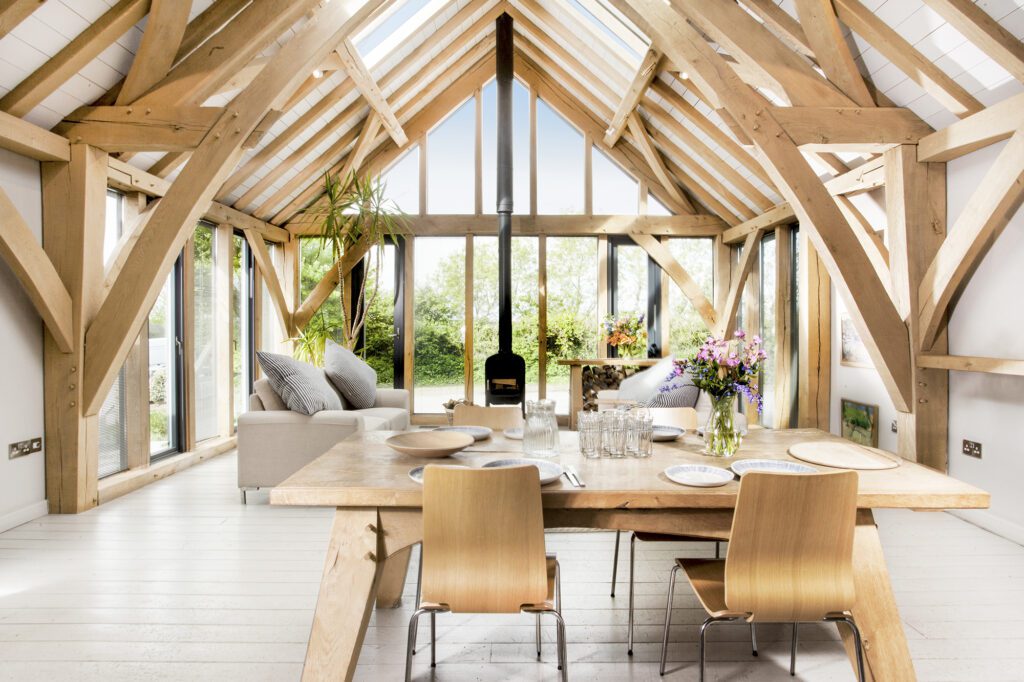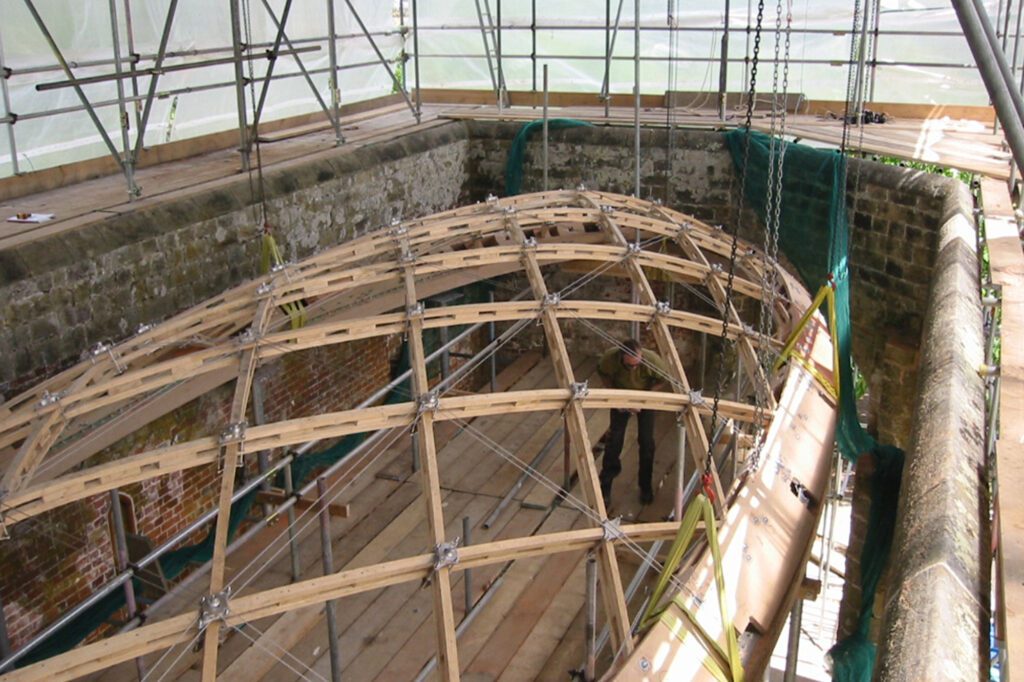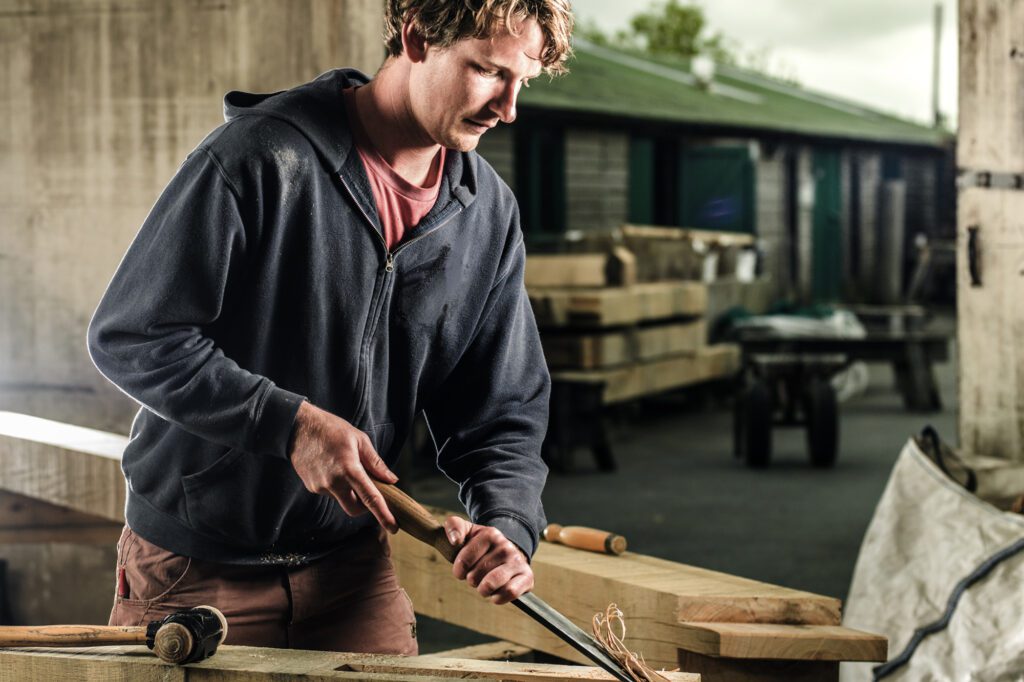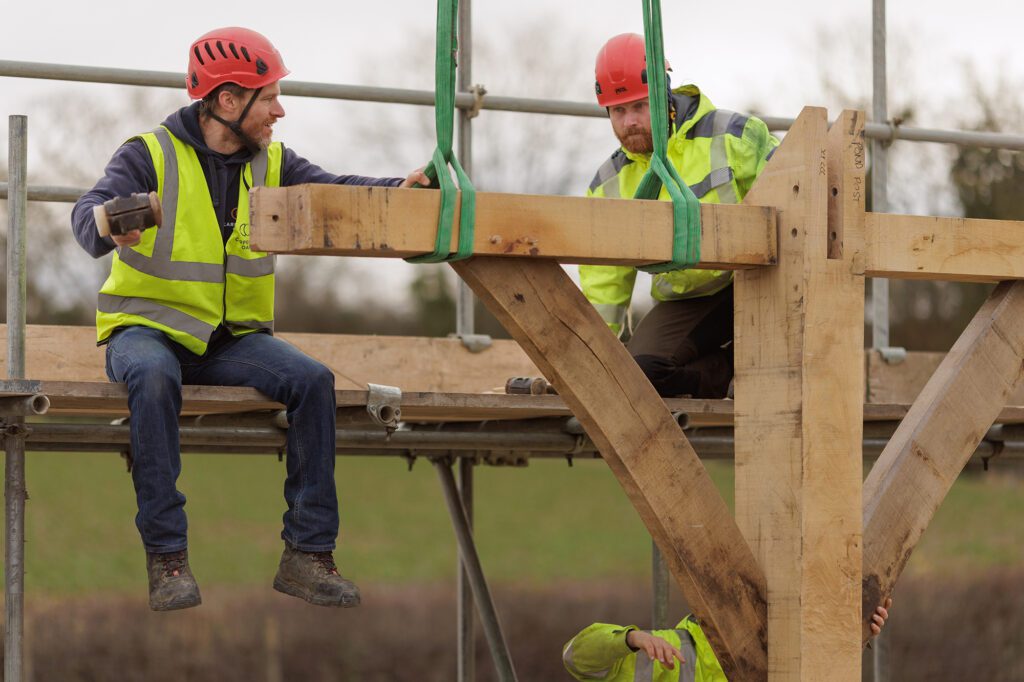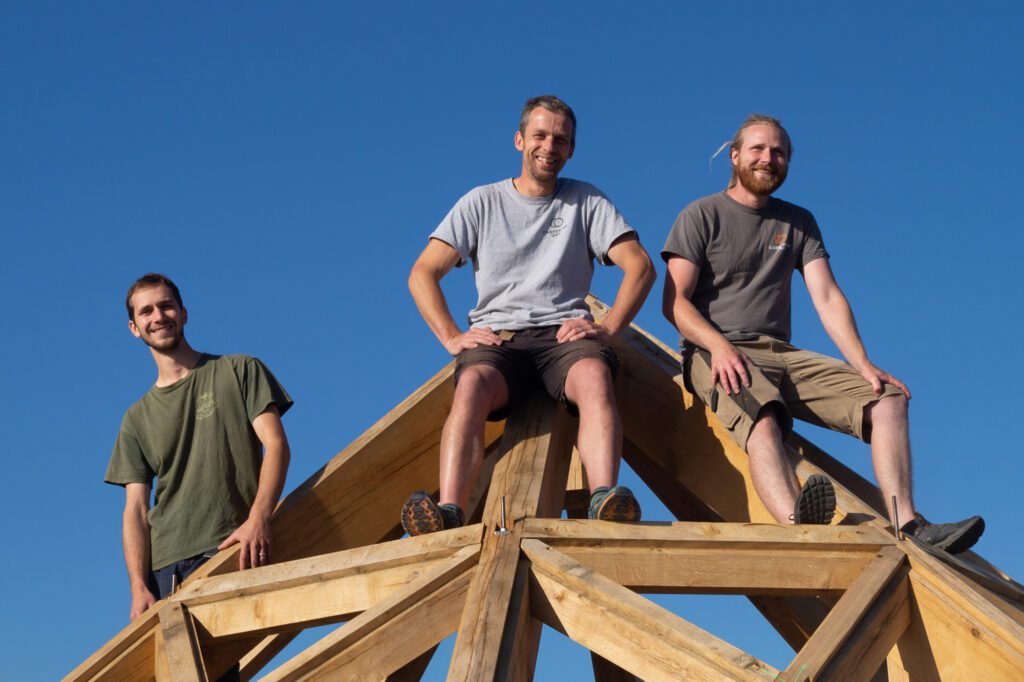Carpenter Oak has been employee owned for a number of years (more on that below), but we only became majority employee owned in January 2023, following many years of planning by Carpenter Oak’s owners, to ensure a smooth succession.
In this blog we’re reflecting on our long and interesting history, as well as the exciting future ahead of us, and explaining why employee ownership was the right thing for Carpenter Oak, and what that looks like for the company.
Carpenter Oak’s history – how we’ve got to where we are
Late 1980s
Founded in Wiltshire in the late 1980s, Carpenter Oak & Woodland specialised in conservation – helping to restore timber framed buildings, including Charlton Court, a 14th century barn in East Sussex, and the kitchen roof in Windsor Castle following the fire there.
- Windsor Castle
- Charlton Court Barn
The 90s
The company’s links with Devon started in the early 1990’s when co-founder and architect, Roderick James, moved to Dittisham and Carpenter Oak & Woodland built its first green oak new-build – a boathouse on a creek of the River Dart, and then Seagull House, adjacent to the boathouse. Seagull House was incredibly popular and appeared in magazines such as Country Life and Country Living, which put the company on the map as the go-to for new-build oak frame houses.
In the mid-1990s two of Carpenter Oak’s longstanding staff members, Adam Milton and Paul Kirkup, decided to start a Devon-based yard and concentrate on these new-build oak frame houses. They took the traditional skills they had learnt from restoring ancient timber frame buildings to build new frames, and along the way, educating architects and engineers on how green oak moves and how encapsulation and glazing systems work with the frames. As well as building homes for clients doing self-builds, they also continued working on non-residential projects such as Bedales School theatre – a contemporary theatre which won a RIBA award.
The end of the decade also saw them working to restore the huge new hammerbeam roof at Stirling Castle in Scotland, which led to the establishment of a yard in Scotland to better serve that part of the UK.
- Seagull House
- Bedales School theatre
- Stirling Castle hammerbeam roof
Into the 21st century
In the early 2000s Paul and Adam formally branched away from Carpenter Oak & Woodland to create their own company – Carpenter Oak. Lee Manning and Stuart Voaden joined as Directors, along with Adam and Paul, and they invested in the Devon yard and built the Show Barn.
Over this decade Carpenter Oak was involved in some incredible projects, such as building a full-scale trebuchet for Warwick Castle (which was recently replaced), and the incredibly challenging Chiddingstone Orangery, and won various RIBA awards and Wood Awards.
- Building the trebuchet
- The Show Barn in Devon
- Chiddingstone Orangery roof
Succession – where to next?
Since 2010, Paul, Adam, Lee and Stuart have been thinking about succession. The question they put to themselves was “What does the Carpenter Oak business look like beyond the original founders and shareholders in the next 35 years?”.
It’s a common issue that’s faced by SMEs and if not planned well for it can mean a business being sold off and losing its core identity. They have always considered – how do we develop and grow the business while maintaining our culture, standards and values?
Carpenter Oak is of course a commercial business which operates in a competitive marketplace, and where financial performance matters, it’s not all that matters. It’s about so much more than profit. Carpenter Oak’s purpose is to create inspiring timber architecture, championing wood, craft, innovation and design.
When the Directors talked about succession, they soon decided that Employee Ownership (EO) was the obvious path for Carpenter Oak. Allowing the employees to own the business themselves (via a Trust) would mean the business was not sold to the highest bidder, where there was a chance its values and culture would have to change to align with whomever bought it, and meant they could share in the commercial success of the business, along with many other benefits.
This new phase for Carpenter Oak initially started in 2017 when the shareholders gifted 10% of the business’ shares into an employee trust. This was facilitated with the help of Capital for Colleagues (C4C), a specialist investment management company, who invested into Carpenter Oak, buying 30% of its shares in June 2017.
Then in 2022, when the business was ready to make this next step, it became 51% employee owned with the Operations Team able to work out a payment plan for the shares via loan notes over a certain number of years.
Why EO and what does it mean for us?
When we look at other brands which are employee owned, we find similarity in their ethos and values. Riverford, John Lewis and Richer Sounds are some of the best-known brands in the UK which are employee owned. Their values are about things like caring for the environment, using ethical suppliers, supporting charitable organisations, paying employees fairly and being considerate of their wellbeing.
Carpenter Oak values a strong team who are professional and competent, feel empowered and invested in, always sharing knowledge and encouraged to keep developing. We’re proud to be a Living Wage Employer (having been officially accredited in July 2022) and with a strong team we can continue our success, creating stunning structural timber buildings and doing business better as we strive to be a force for good.
There are a few different models for EO:
- Indirect employee ownership, where shares are held collectively on behalf of employees, normally through an employee trust e.g. John Lewis & Partners.
- Direct employee ownership – using one or more tax advantaged share plans, employees become registered individual shareholders of a majority of the shares in their company. These are called SIP (Share Incentive Plan) schemes.
- Combined direct and indirect ownership – a combination of individual and collective share ownership e.g. Purcell and Narro Associates.
Carpenter Oak is following the indirect ownership route, with shares held in an Employee Trust on behalf of employees. As well as being able to share in some of the company’s commercial success, being employee owned also means Carpenter Oak’s employees, or Co-owners, have a real part to play in shaping the company going forward.
There are three EO reps within the company, each responsible for their constituency which covers a different part of the business. The constituencies meet to discuss specific subjects, e.g. newly proposed policies or topics such as work/life balance. Co-owners can discuss, debate and put forward their opinions and suggestions, or identify and propose business improvements. These are taken back to the EO forum who amalgamate, summarise and share them with The EO Trust Board.
Carpenter Oak’s EO Trust Board is made up of an EO rep, an External Trustee Director, Lee Manning (who represents the existing shareholders) and Managing Director Luke Copley-Wilkins. The Board meets quarterly and will review and implement the information from the EO forum.
Legacy and looking forward
Since those first discussions about succession 12 years ago, the founders and directors of Carpenter Oak are incredibly proud of the legacy they have left behind. “You can go to pretty much any corner of this land and you’re not going to be far away from a Carpenter Oak frame”, Paul Kirkup, Frame Designer, Founder and Co-Owner.
We’re a business but also a force for good. Our legacy of beautiful buildings that are well built with excellent materials, by a team of passionate people who care about what we create will continue on. Becoming EO has helped to protect this and will also help the business to evolve and grow.
“Carpenter Oak has a unique culture that has been shaped by an incredible group of people who love crafting stunning timber frames. By becoming employee owned we are able to protect this brilliant culture and hold on to our values. We believe that employee ownership is a better way to do business and I’m excited about this amazing opportunity for us as a business”. Luke Copley-Wilkins, Managing Director
